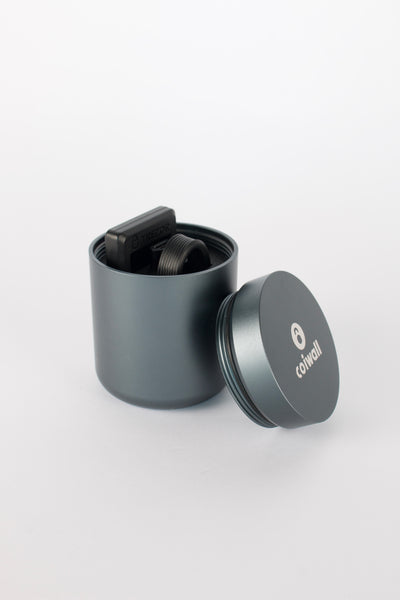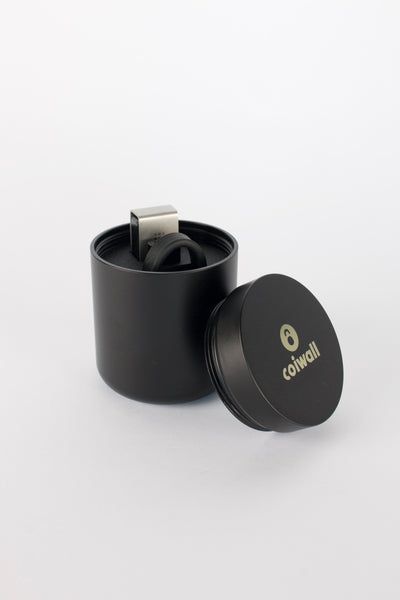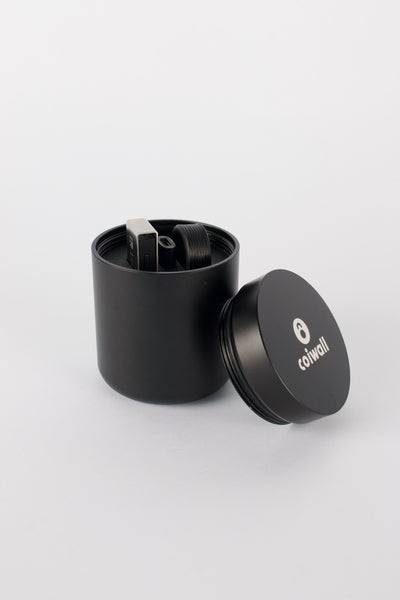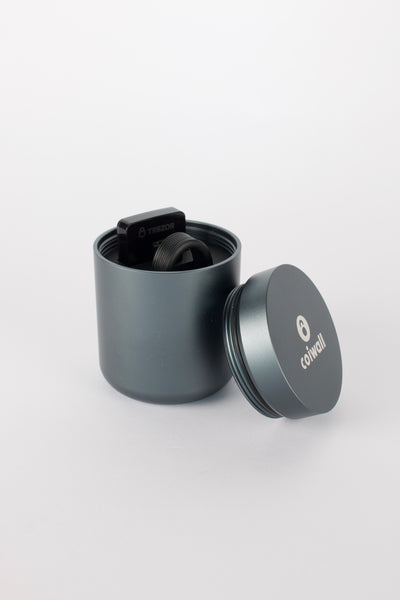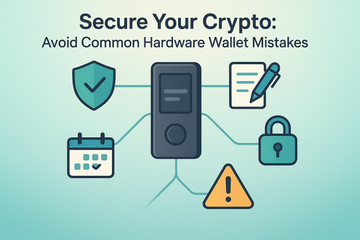Starting Off on the Right Foot: Why Hardware Wallet Setup Isn’t Just Plug-and-Play
Look, the idea of setting up a hardware wallet like a Trezor or Ledger sounds pretty straightforward. You crack open the box, connect it to your laptop, and presto—your crypto is locked up safer than a squirrel guarding its secret winter stash. Well, hold your horses for a second. If it really was that simple, there wouldn’t be so many wild stories online about folks losing coins because of a tiny slip during setup. Let’s shine a light on those pesky mistakes people make—some obvious, some devilishly sneaky—and how you can skirt right around them.
Not Writing Down the Recovery Phrase… Yes, It Still Happens
You know what? It’s almost comical how much trouble a handful of words can cause. The recovery phrase—or 'seed phrase,' depending on who’s talking—is like the master key to your digital vault. Yet, time after time, people rush through the setup and fail to write it down properly. Maybe they leave it on a digital notepad (bad move), snap a photo on their phone (worse move), or just jot it on a coffee-stained napkin. Couldn’t happen to you, right?
Here’s the deal: If you lose that phrase, you lose access. Forever. No password reset. No customer support miracle. Kind of terrifying when you stop and think about it. So, grab pen and paper—heck, grab two if you’re feeling paranoid—and copy those words exactly. Spell them out, double-check, then triple-check. Find a sturdy notebook, write neatly, stash it somewhere fireproof if you can. And for the love of crypto, do not take a photo or store it online. More on that in a bit.
Jumping the Gun: Rushing Through Firmware Updates
Let’s be honest, nobody gets excited about firmware updates. But skipping or fumbling this process can leave you with a device that’s about as secure as leaving a key under the doormat. The first time you connect a hardware wallet—especially if you bought it from a retail shelf—always check for official firmware updates on the company’s website. Trust me, Ledger and Trezor constantly iron out bugs and add support for new coins. An out-of-date wallet isn’t just a missed opportunity; sometimes it’s downright risky.
So, don’t plug in and click through with abandon. Take a moment. Visit the official site. Follow the prompts (even if you have to watch a boring instructional video—they’re usually worth it). Double-check download links to ensure you’re not accidentally falling for a phishing trap. Which brings me to another point…
Falling for Fake Websites or Dodgy Software
This one stings—especially with how clever scammers are getting. There are lookalike websites, fake browser extensions, and even counterfeit wallet apps floating around. Some of them would fool even Sherlock Holmes. So, when you’re setting up your Trezor or Ledger, make absolutely sure you’re using the official website. Watch out for small spelling mistakes in URLs, weird popups, or sudden sketchy requests for sensitive data. Whenever possible, start with the direct web address printed in the hardware’s manual or packaging. Bookmark it for future use.
Let’s get real: nobody is immune to a convincing scam if they’re distracted or in a hurry. If something feels off, pause. Google the official site (carefully), or even double-check with a community forum. Crypto Twitter can be a jungle, but sometimes it’s actually helpful for sniffing out current frauds.
The Myth of 'Set-and-Forget': Complacency Kills
You wouldn’t stick your life savings in a safe and forget where you put it, right? Yet plenty of folks set up their hardware wallets, tuck the seed phrase in a random drawer, and figure they’re good to go. But digital security isn’t a set-and-forget deal. Over time, operating systems change, browser support evolves, and Trezor or Ledger might nudge you for firmware updates.
- Mark calendar reminders for periodic device checkups
- Refresh yourself on the recovery process at least once a year (using a test wallet, not your actual funds)
- Verify that your contact info and notification preferences are up-to-date on exchanges or related services
Think of it like discovering your passport is expired the night before an international flight—annoying. Don’t let it happen; a little attention goes a long way.
Mixing Online and Offline: Where Security Gets Slippery
Sometimes, convenience whispers seductive things—'Just copy and paste your recovery phrase into your cloud notes for safekeeping. Nobody will ever find it there!' Well, maybe not immediately, but that’s exactly the sort of shortcut hackers gamble on. Hardware wallets are powerful because they keep your private keys offline. The moment you go digital with backup info—photos, cloud storage, email drafts—it’s like leaving your house keys with a total stranger.
If you must keep a backup, make it physical. If you’re extra cautious (and there’s no shame in that), consider splitting the phrase and storing parts separately. There are even fancy metal recovery plates you can engrave—the crypto equivalent of 'measure twice, cut once.'
Using Wallets on Multiple Devices: Recipe for a Headache
Here’s another classic mistake: syncing or connecting your hardware wallet to multiple computers or phones. Maybe you’re showing a friend, maybe you want access from work and home. But every new connection is another potential risk—especially if you don’t trust every device’s security. It’s easier than you think to end up with malware or a keylogger piggybacking on your good intentions.
Stick to one or two devices you trust implicitly. If you must use a public or unfamiliar computer (seriously, try to avoid it), always make sure it’s fully scanned and up-to-date.
Glossing Over PIN and Passphrase Setup
OK, it’s tempting to set an easy PIN to save yourself the hassle—'1234,' anyone? But this number is the last line of defense if your wallet falls into the wrong hands. Choose something unique (but memorable), and don’t reuse numbers from your phone or bank card. If your wallet supports an extra passphrase (sometimes called a 25th word or hidden wallet), it’s worth considering. It adds an extra layer, and true-to-form, Trezor and Ledger both offer this feature.
The 'Trust-But-Verify' Rule—Test Recovery Before Real Money Moves
Here’s a pro tip that too many overlook: try restoring your wallet with the seed phrase on a clean device before you send your hard-earned coins over. Nothing fancy—just make a 'dry run' with tiny amounts first. Knowing that you can recover your wallet gives peace of mind, especially if disaster ever strikes. Trust me, the smug feeling of 'I nailed this' is worth a few extra minutes up front.
Closing Thoughts: Play the Long Game
Let’s circle back. No, setting up a hardware wallet isn’t rocket science, but getting casual with any step could mean real pain down the line. That’s why wallet makers like Trezor and Ledger bend over backward to walk you through setup with clear guides—and honestly, if you hit a snag, their customer support and community forums are solid lifelines.
So take your time. Ask questions if you’re stumped—Reddit, forums, or even that one persistent friend who swears by his four backups. Crypto is about freedom, but with freedom comes responsibility. Get the details right, and you’ve got yourself a vault, not a ticking time bomb. Happy stacking!

